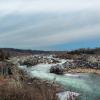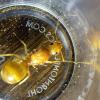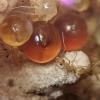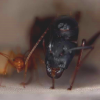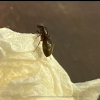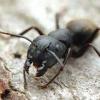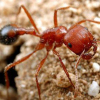Since around my house there's basically just Iridomyrmex, Nylanderia, Rhytidoponera and Pheidole I'll do around my grandparents house.
This is in maybe a 1-2km radius:
Iridomyrmex sp. ©
Pheidole sp. ©
Nylanderia ©
Crematogaster sp. ©
Melophorus sp. (U)
Rhytidoponera metallica ©
Rhytidoponera victorae (U)
Rhytidoponera aspera/chalybea ©
Colobopsis gasseri ®
Aphaenogaster longiceps ©
Monomorium floricola (VR)
Polyrachis cf. vermiculosa, subgenus Chairomyrma al least ©
Polyrachis cf. ammon, subgenus Hagiomyrma at least ©
Polyrhachis subgenus Campomyrma (U)
Polyrhachis hookeri ©
Camponotus sp. (similar to humilior) (U)
Camponotus cf. claripes ®
Camponotus cf. nigriceps ©
Different Camponotus nigriceps-group (U)
Myrmecia nigrocinta ©
Myrmecia tarsata (U)
Myrmecia forficata ®
Myrmecia pilliventris (VR)
Mesoponera australis (CR)
Acropyga sp. (CR) (Acropyga do count as cryptic, right?)
Solenopsidini ants, probably Solenopsis (CR) (they're very small)
Meranoplus sp. (VR)
Key:
© = common
(U) = uncommon
® = rare
(VR) = very rare
(CR) = cryptic/likely cryptic, therefore unsure of rarity
(it turned all the commons and rares into copyright and registered symbols  )
)
Edited by Leptomyrmx, July 31 2022 - 1:24 AM.
My Ants:
Colonies: Camponotus humilior 1w, Opisthopsis rufithorax 11w, Aphaenogaster longiceps ~5w, Pheidole sp. ~235w ~15m, Iridomyrmex sp. 2q 1w, Brachyponera lutea 6w, Crematogaster sp. ~20w, Podomyrma sp. 1w
Queens: Polyrhachis cf. robinsoni, Polyrhachis (Campomyrma) sp. (likely infertile)
Previously Kept: Colobopsis gasseri, Technomyrmex sp., Rhytidoponera victorae, Nylanderia cf. rosae, Myrmecia brevinoda/forficata, Polyrhachis australis, Solenopsis/Monomorium
Key: Q = Queen, W = Worker, M = Major
Youtube Channel: Ants of Sydney - YouTube
Patreon (for YouTube channel): https://www.patreon.com/antsofsydney






